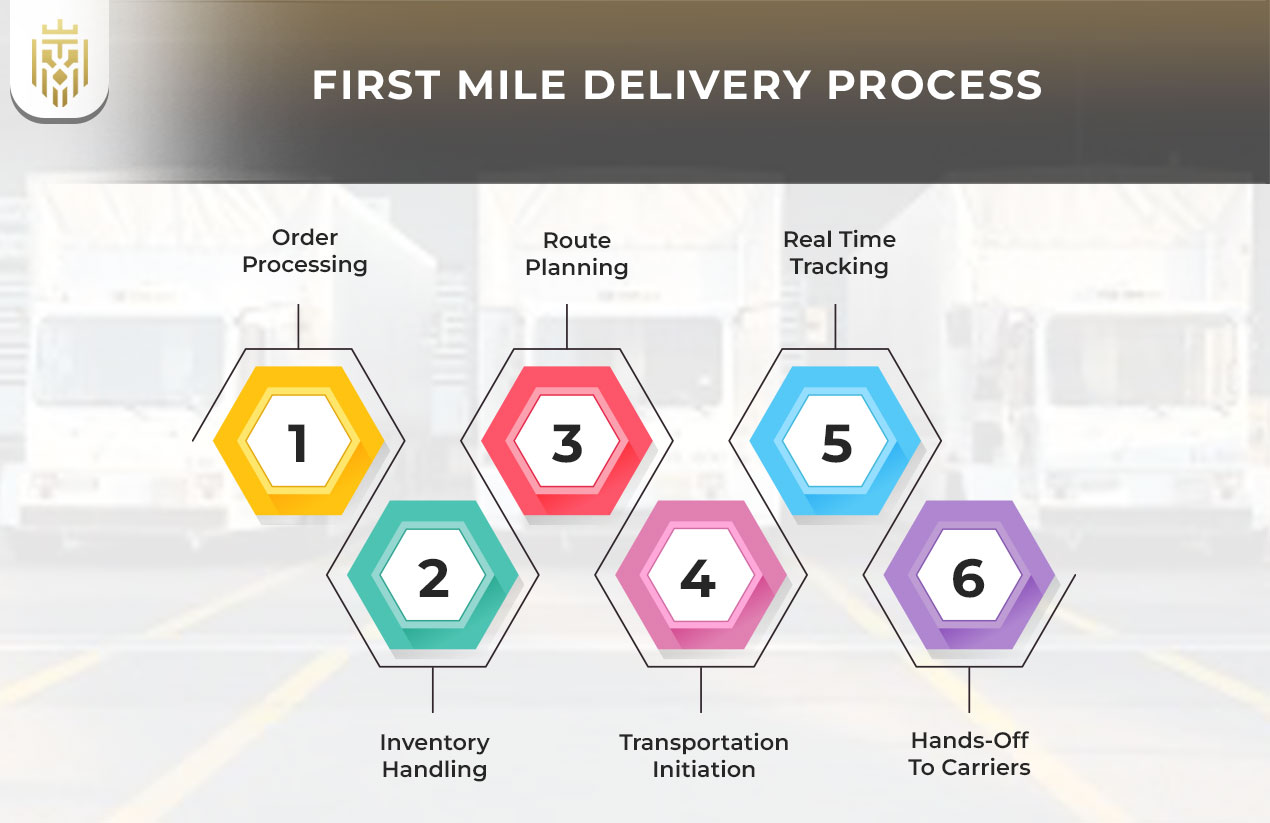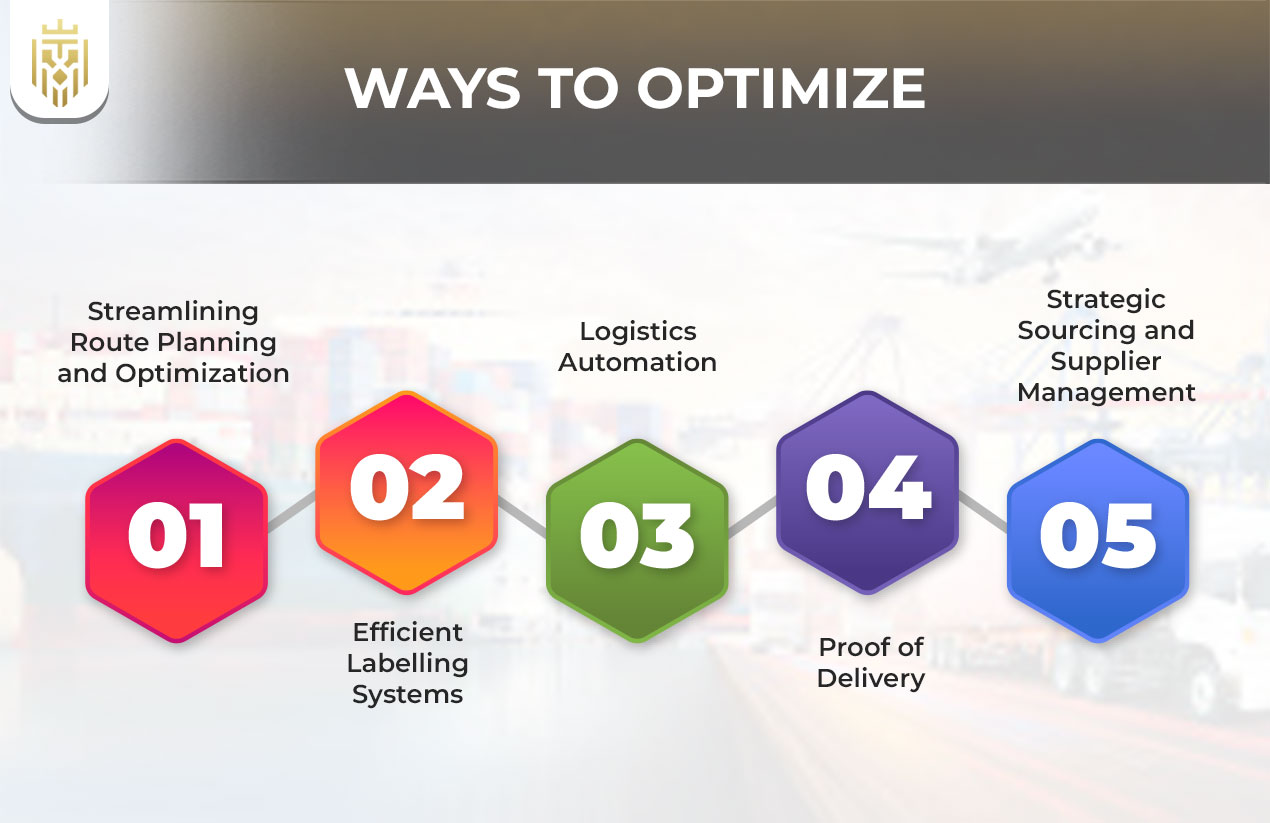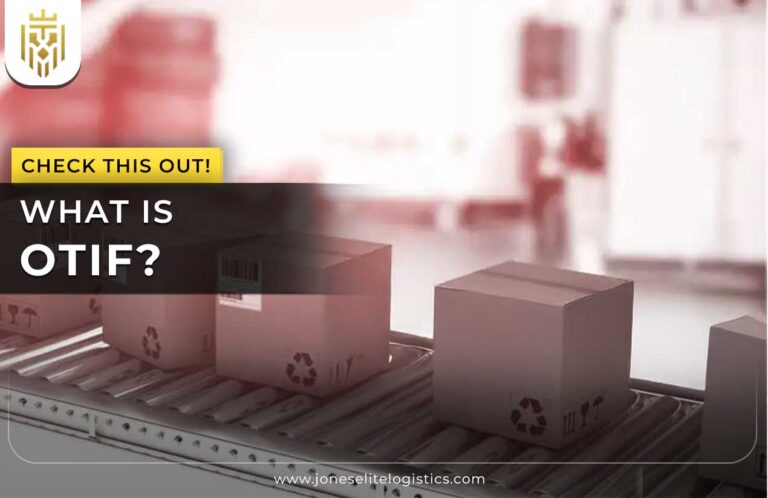What is First Mile Delivery?
First mile delivery is the initial stage in the supply chain process that involves the transportation of goods from a supplier to a transportation hub, warehouse, or distribution centre. This stage is crucial as it sets the groundwork for seamless delivery operations, ensuring that first mile delivery service is both efficient and results in timely delivery. First mile delivery meaning varies by business model; however, it remains integral in ensuring goods move effectively from the manufacturer to the distributor in the stage supply chain while reducing shipping costs..
What is First Mile Logistics?
First mile logistics encompasses the initial transportation of goods from a manufacturer or retailer to a central distribution centre. This includes essential tasks like order validation, picking up and packaging goods, and organizing the shipment, making it a key part of the supply chain process. Effective logistics operations and multimodal transport solutions streamline first mile logistics, ensuring the shipment is ready for middle mile delivery while reducing shipping costs and improving mile delivery optimization.
First Mile Delivery Process:
The first-mile delivery process involves order processing, inventory handling, route planning, transportation initiation, real-time tracking, and hands-off to carriers. It ensures seamless delivery operations from suppliers or manufacturers to logistics providers, optimising the delivery journey for greater efficiency.

Order Processing:
In first-mile delivery, order processing includes all steps from order receipt to shipment readiness. This involves picking, packing, and preparing goods for transportation, ensuring a smooth delivery process with minimal delays and errors. Proper handling at this stage helps lower shipping costs while supporting middle mile and final mile delivery.
Inventory Handling:
Inventory handling in first-mile delivery involves receiving, storing, and managing goods from suppliers or manufacturers. It ensures efficient movement within the transportation hub, optimises stock control, and supports mile operations, reducing errors and bottlenecks in the logistics process.
Route Planning:
Route planning in first-mile delivery focuses on selecting the most efficient transport paths from suppliers or manufacturers to warehouses or distribution centres. Effective planning helps reduce delivery time, minimize shipping costs, and enhance final delivery reliability, ensuring an optimised mile tracking system.
Transportation Initiation:
Transportation initiation marks the beginning of the delivery process, where goods are collected from manufacturers or suppliers. They are then prepared for middle mile delivery, ensuring structured and efficient mile operations within the logistics process.
Real Time Tracking:
Real-time tracking in first-mile delivery offers instant visibility into mile tracking, helping businesses and customers track shipments. It enhances logistics operations, reduces inefficiencies in middle mile delivery, and ensures timely delivery, supporting better decision-making in transportation management systems.
Hands-Off To Carriers:
The hands-off to carriers stage in first-mile delivery signifies the transfer of responsibility from sellers or manufacturers to logistics providers. This transition is crucial for an efficient delivery process, enabling cost-effective mile delivery optimization while ensuring smooth reverse logistics when necessary.
What is the role of First Mile Delivery in the supply chain?
The role of First Mile Delivery is pivotal within the supply chain process, influencing route optimization, inventory allocation, and overall logistics operations. This stage in the supply chain aids route optimization, supports transport management strategies, enhances final mile delivery, and ensures goods are optimally positioned to meet customer demands. A well-optimized first mile delivery service reduces shipping costs, aids in route planning, and ensures timely delivery while strengthening the logistics provider network.
What are the differences between First Mile Delivery and Last Mile Delivery?
First mile delivery refers to the initial movement of goods from a supplier to a transportation hub, while last mile delivery focuses on the final step—delivering goods to the customer. First mile logistics are generally more cost-effective and faster, while last mile delivery directly influences customer satisfaction but faces challenges like traffic, meeting same day delivery demands, and time-sensitive constraints. Understanding what is first mile and last mile delivery highlights their distinct roles and transport management challenges within the stage supply chain.

Components of First Mile Delivery:
Key components of first mile delivery include packaging, efficient routing, and real-time tracking. Each component supports logistics flow, enhances supply chain transparency, and sets the foundation for smooth Freight Transportation.
Packaging:
Accurate packaging and labelling are vital in first mile delivery, as errors here can lead to costly delays down the line. Proper handling ensures goods remain intact during transportation, enhancing the reliability of middle mile delivery and reducing inefficiencies in first mile delivery process.
Efficient Routing:
Efficient routing through route optimization in first mile delivery reduces shipping costs and fuel consumption. By planning these routes well, companies can improve their freight transportation strategies and reduce the wear and tear on delivery vehicles, supporting a more sustainable and cost-effective supply chain process.
Real Time Tracking:
Implementing real-time tracking in first mile delivery optimization enables businesses to enhance route optimization, monitor inventory in transit, and reduce operational costs with consideration for elements like delivery time. It strengthens transportation management systems, improves visibility in middle mile delivery, and enhances the overall delivery process.
Challenges of First Mile Delivery:
Challenges in first mile delivery include mile tracking limitations, high operational costs, inconsistent packaging, and unpredictable transportation issues. These factors impact freight transportation efficiency, necessitating robust route optimization for improvement.

Tracking Limitations:
One of the major challenges in first mile delivery is the lack of tracking visibility. Without proper mile tracking, logistics providers struggle to update customers and manage delays effectively, impacting timely delivery.
Packaging:
Poor packaging disrupts the delivery process, leading to product damage and increased shipping costs. Failure to meet packaging norms can mean damaged goods or missed shipments, bottlenecks in stage supply chain.
Route Planning:
Route planning challenges in the first mile delivery include visibility, high cost, and uncertainty of unforeseen events with the potential to affect the customer satisfaction and brand reputation.Robust route optimization is the key to first mile delivery optimization and is used to overcome these obstacles and get timely deliveries across the supply chain process.
Operational Cost:
High shipping costs in first mile delivery arise from fuel consumption, frequent stops, and manual inefficiencies. Transportation management systems and automation help cut logistics operations expenses, ensuring a more efficient final delivery.
First Mile Delivery Optimization:
First mile delivery optimization can help logistics by providing route planning software, choosing the right vehicle and managing warehouse processes. With these route optimization practices, variables like traffic and distance are considered for cost-effective transportation and mile delivery optimization, adding value to the supply chain process.

Route Planning and Optimization:
First mile delivery optimization can help logistics by providing route planning software, choosing the right vehicle and managing warehouse processes. With these route optimization practices, variables like traffic and distance are considered for cost-effective transportation and mile delivery optimization, adding value to the supply chain process.
Efficient Warehouse Management:
Optimizing warehouse management in first mile logistics requires streamlining logistics through route optimization, efficient labelling, and automation. These improvements reduce shipping costs, enhance efficiency, and create a strong foundation for seamless delivery operations, ensuring smooth transitions in middle mile delivery and final mile stages.
Labelling:
First mile delivery optimization is reliant on efficient labelling systems. Digital tools for accurate labelling cut errors down, improve mile tracking, and improve timely transportation.Multimodal Transport strategies are enhanced through advanced labelling techniques improving the first mile delivery service even more smoother and reliable.
Logistics Management:
Putting logistics management in first mile logistics on an automated track helps to reduce manual work and provide better load planning. Real-time tracking and route optimization reduce operational costs and increase productivity, enhancing a more efficient logistics operation from freight transportation to intermodal transport.
Proof of Delivery:
In first mile delivery, the proof of delivery process is optimised for use with digital signatures, photos, and live tracking to verify deliveries, delivery time, and lower error rates while increasing logistics process transparency. These practices create accountability in freight transportation and contribute to higher customer satisfaction in the delivery journey.
Strategic Sourcing and Supplier Management:
Enhancing first mile delivery through strategic sourcing and supplier management involves securing reliable suppliers, maintaining clear communication, and using technology for tracking and visibility. Efficient supplier coordination minimises delays, optimises order management, and strengthens the overall supply chain process, ensuring efficient movement from the transportation hub to the final delivery stage.
FAQs
1. What is First Mile Delivery?
First Mile Delivery is the initial supply chain process stage, where goods move from a supplier to a warehouse or distribution centre. It’s essential for establishing efficient transportation and supporting first mile delivery optimization.
2. What are the differences between First Mile Delivery and Last Mile Delivery?
First mile delivery refers to initial goods movement, typically less costly and faster, while last mile delivery involves the final stage and directly impacts customer experience. First mile delivery and last mile delivery face distinct logistics challenges.
3. What are the components of First Mile Delivery?
Components of first mile delivery include efficient packaging, route planning, real-time tracking, and labelling. These elements reduce logistics costs, enhance transport management, and support seamless Freight Transportation in the supply chain.
4. How to Reduce First Mile Costs?
To reduce first mile costs, companies focus on route optimization, automated logistics management, efficient labelling, and real-time tracking. Optimizing these areas minimizes fuel and labour expenses, improving profitability and supply chain efficiency.








